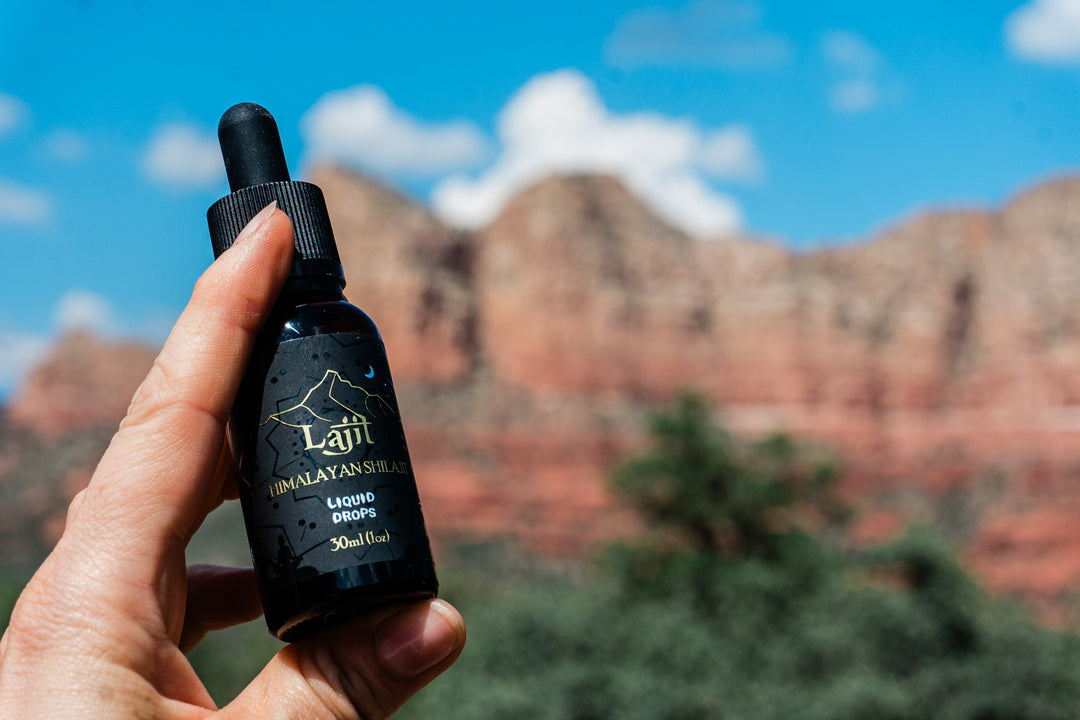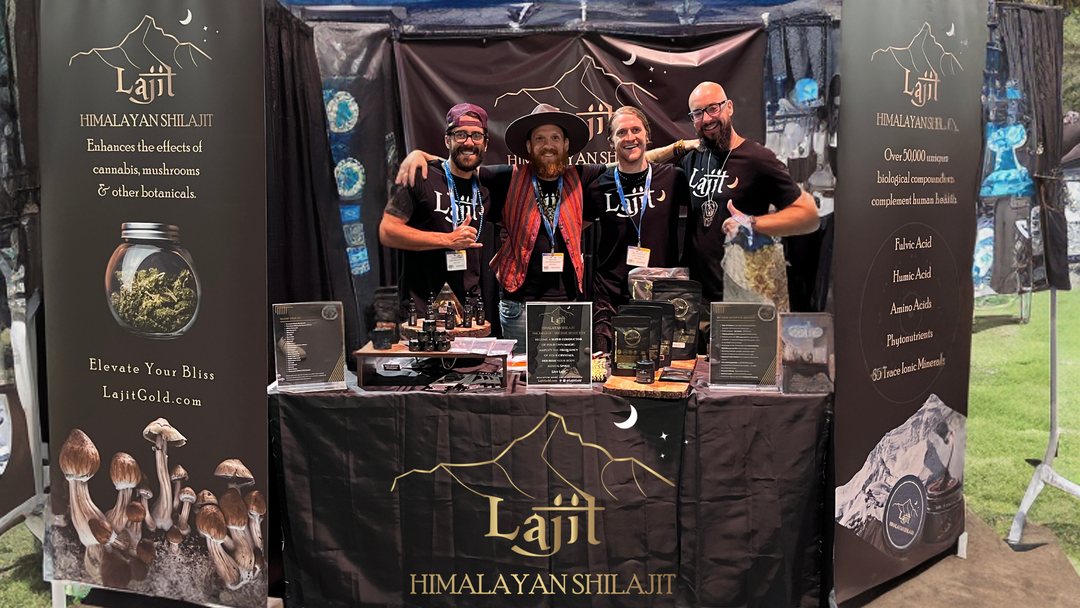The Ultimate Guide to Shilajit & Oxidative Stress
Shilajit research • oxidative stress
New Human Research on Shilajit & Oxidative Stress (What It Means for You)
In a 30-day human study of older adults on standard care for hypertension, antioxidant defenses went up and oxidative stress markers went down with shilajit—while vascular measures didn’t shift over that short window. Here’s what that means (and what it doesn’t).
What Is Shilajit?
Shilajit is a mineral-rich resin that seeps from high-altitude rock, especially in the Himalayas. In Ayurveda it’s a classic rasāyana—used to support vitality. Modern analyses describe a complex matrix of trace minerals and organic components (including fulvic acids) that interact with redox pathways.
The Study at a Glance
Design & Population
- Open-label randomized controlled study
- ~60 older adults with hypertension; on standard care
- Duration: 30 days
Intervention
- Shilajit: 500 mg twice daily
- Control: standard care without shilajit
Key Outcomes (vs. control)
- ↑ Total Antioxidant Capacity (TAC)
- ↑ Superoxide Dismutase (SOD)
- ↑ Reduced Glutathione (GSH)
- ↓ Malondialdehyde (MDA)
- ↓ Oxidized LDL (ox-LDL)
Vascular Endpoints
Arterial stiffness and endothelial function: no significant change at 30 days.
These are biomarker shifts; clinical outcomes were not assessed.
Why Antioxidant Capacity Matters
Oxidative stress is biological “rust.” When reactive oxygen species outpace defenses, they disturb redox signaling and damage lipids and proteins. Antioxidant capacity reflects how well the body keeps that balance.
Antioxidant Markers
- SOD: disarms superoxide radicals
- GSH (reduced glutathione): central cellular redox buffer
- TAC: big-picture antioxidant potential
Oxidative Stress Markers
- MDA: byproduct of lipid peroxidation
- ox-LDL: oxidized cholesterol particles linked with endothelial strain
Plain English: the study observed a shift toward stronger antioxidant status over 30 days—something that can support healthy aging and everyday vitality.
Results, in Plain English
| Biomarker | Direction at 30 Days | What That Suggests |
|---|---|---|
| Total Antioxidant Capacity (TAC) | ↑ | Greater overall antioxidant potential |
| Superoxide Dismutase (SOD) | ↑ | More enzymatic neutralization of free radicals |
| Reduced Glutathione (GSH) | ↑ | Improved cellular redox buffering |
| Malondialdehyde (MDA) | ↓ | Lower lipid peroxidation |
| Oxidized LDL (ox-LDL) | ↓ | Lower presence of oxidized particles |
| Vascular endpoints | — | No significant change over 30 days |
Arrows indicate direction vs. control. Surrogate biomarkers only.
What This Does Not Mean
- This is not evidence that shilajit treats, cures, or prevents hypertension or vascular disease.
- Vascular function measures did not change significantly in 30 days.
- Improved antioxidant status can be supportive of vascular health; clinical improvements were not shown here.
How to Use Shilajit Safely
Formats & Taste
- Living Resin: classic, tar-like; dissolve a rice-grain piece in warm water/tea.
- Liquid Drops: pre-dissolved resin—quick and travel-friendly.
- Taste is earthy/mineral. Many enjoy it in morning tea or post-workout.
General Tips
- Common ranges: 300–500 mg once or twice daily.
- Start low; assess how you feel; stay consistent.
- Speak with your clinician if you’re on medications or pregnant/nursing.

Gold-grade, single-origin Himalayan resin. Purified by Sherpa partners. Triple-lab tested.
Explore Living Resin
Pre-dissolved resin for convenience and consistency. Same source, same standards.
Try Liquid DropsWhy Quality (Really) Matters
Provenance and purification drive safety and consistency. Lajit Gold’s single-origin Himalayan resin is purified by Sherpa families using time-honored methods, verified by independent labs for identity, heavy metals, and microbes, and packaged in cGMP facilities.
Study Limitations & Next Steps
- Short duration (30 days)
- Open-label design (no placebo blinding)
- Older hypertensive cohort on standard care
- Surrogate biomarkers (no clinical outcomes)
- Longer, placebo-controlled trials across diverse populations
- Mechanistic work linking redox shifts to functional endpoints
- Standardized product characterization for reproducibility
TL;DR
- 30-day add-on study (~60 older adults) used shilajit 500 mg twice daily.
- Observed ↑ TAC/SOD/GSH and ↓ MDA/ox-LDL vs. control.
- Vascular measures showed no significant change at 30 days.
- Antioxidant support ≠ treatment. Choose rigorously tested Himalayan shilajit.
FAQs
What does the latest shilajit research say?
In a 30-day open-label randomized study in older adults with hypertension on standard care, shilajit 500 mg twice daily was associated with higher total antioxidant capacity, SOD, and reduced glutathione, and with lower MDA and oxidized LDL. Vascular endpoints did not change significantly.
Does shilajit support antioxidant balance?
Evidence suggests shilajit supports oxidative/antioxidant balance, reflected by shifts in redox biomarkers. This is not medical advice.
Is this evidence that shilajit treats hypertension?
No. The study did not show changes in arterial stiffness or endothelial function at 30 days and did not assess treatment.
How do I choose a high-quality Himalayan shilajit?
Look for single-origin, high-altitude sourcing, traditional purification, and third-party testing for identity, heavy metals, and microbes—with public COAs. Review ours here.
What are fulvic acid benefits in this context?
Fulvic acids are part of shilajit’s natural matrix and are studied for redox and transport properties. Trials used the whole purified resin, not isolated fulvics.
References
- Patil SG, Sarashetti A, et al. Effect of purified Shilajit (Asphaltum punjabianum) on oxidative stress, arterial stiffness and endothelial function in elderly with hypertension: A randomised controlled study. Indian J Physiol Pharmacol. 2023. (Open-label RCT; ~60; 500 mg BID × 30 days; ↑TAC/SOD/GSH; ↓MDA/ox-LDL; no significant vascular change).
- Griendling KK, Touyz RM, et al. Oxidative Stress and Hypertension. Circulation Research. 2021. Review of redox biology in hypertension.
- Jiang H, et al. Mechanisms of Oxidized LDL–Mediated Endothelial Dysfunction. 2022. Review on ox-LDL and vascular health.





